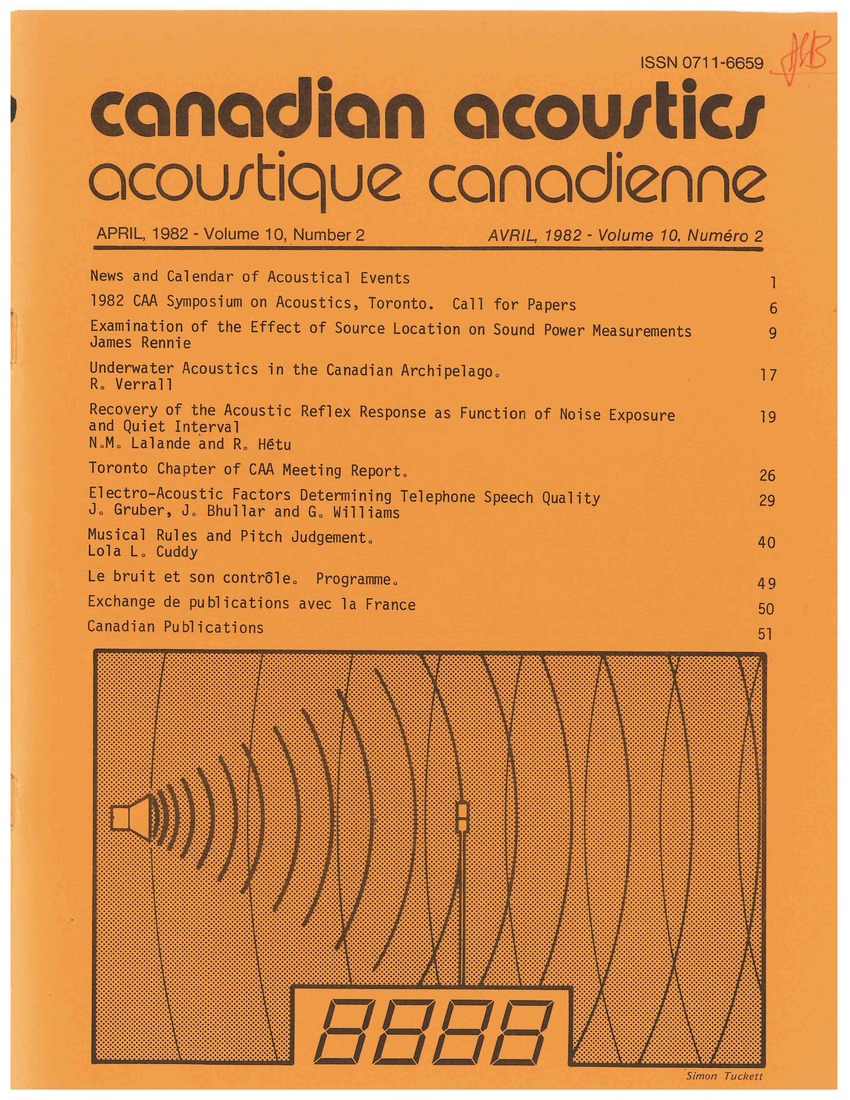Electro-Acoustic Factors Determining Telephone Speech Quality
Résumé
Dans ce document, les facteurs électro-acoustiques exerçant un effet sur la qualité des signaux vocaux téléphoniques transmis sont divisés en trois classes : les facteurs liés à l’écoute, comme la force des sons, le bruit, la réponse en fréquence et l'écho de la personne à l'écoute, les facteurs liés au parler, comme l'écho de la personne qui parle et l'effet local, et enfin les facteurs liés à la conversation comme le délai d'attente. L'auteur met l'accent plus particulièrement sur les facteurs liés à l'écoute ; ces derniers font l'objet d'une interprétation qualitative en termes de pression acoustique imposée à l'oreille par rapport aux seuils de l'audition et de la douleur. Aux fins d'illustration, l'auteur examine ensuite des communications téléphoniques typiques où un certain nombre des facteurs susmentionnés se manifestent. Pour ce faire, il utilise une installation de simulation de réseau de la Société de recherches Bell-Northern pour simuler différentes réductions de la qualité de transmission pour faire une évaluation objective et subjective. L'auteur traite aussi de résultats quant au niveau du service, en établissant un rapport entre l'opinion du consommateur sur la qualité de la transmission et le niveau d'un paramètre de transmission. Ces résultats comprennent l'écho de la personne à l'écoute, le délai d'attente et l'établissement d'un modèle subjectif et équivalent du bruit de type numérique lié à la conversation en termes de bruit analogue continuel.Fichiers supplémentaires
Publié-e
Comment citer
Numéro
Rubrique
Licence
Author Licensing Addendum
This Licensing Addendum ("Addendum") is entered into between the undersigned Author(s) and Canadian Acoustics journal published by the Canadian Acoustical Association (hereinafter referred to as the "Publisher"). The Author(s) and the Publisher agree as follows:
-
Retained Rights: The Author(s) retain(s) the following rights:
- The right to reproduce, distribute, and publicly display the Work on the Author's personal website or the website of the Author's institution.
- The right to use the Work in the Author's teaching activities and presentations.
- The right to include the Work in a compilation for the Author's personal use, not for sale.
-
Grant of License: The Author(s) grant(s) to the Publisher a worldwide exclusive license to publish, reproduce, distribute, and display the Work in Canadian Acoustics and any other formats and media deemed appropriate by the Publisher.
-
Attribution: The Publisher agrees to include proper attribution to the Author(s) in all publications and reproductions of the Work.
-
No Conflict: This Addendum is intended to be in harmony with, and not in conflict with, the terms and conditions of the original agreement entered into between the Author(s) and the Publisher.
-
Copyright Clause: Copyright on articles is held by the Author(s). The corresponding Author has the right to grant on behalf of all Authors and does grant on behalf of all Authors, a worldwide exclusive license to the Publisher and its licensees in perpetuity, in all forms, formats, and media (whether known now or created in the future), including but not limited to the rights to publish, reproduce, distribute, display, store, translate, create adaptations, reprints, include within collections, and create summaries, extracts, and/or abstracts of the Contribution.


